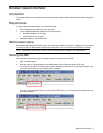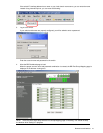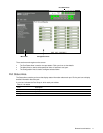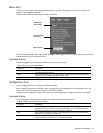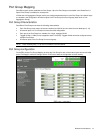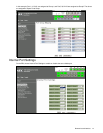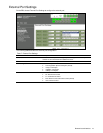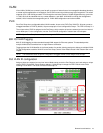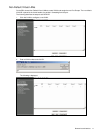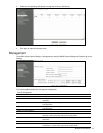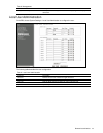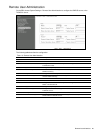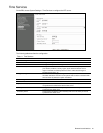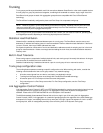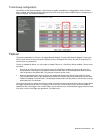
Browser-based interface 16
VLAN
Virtual LANs (VLANs) are commonly used to split up groups of network users into manageable broadcast domains,
to create logical segmentation of workgroups, and to enforce security policies among logical segments. This switch
supports up to 1,000 VLANs per switch. Even though the maximum number of VLANs supported at any given time
is 1,000, each can be identified with any number between 1 and 4095. VLAN 4095 is used by the management
network, which includes the management port 19. VLAN 4095 configuration cannot be modified.
PVID
Each Port Group has a configurable default VLAN number, known as its PVID (Port VLAN ID). All ports are set as
untagged members of PVID. By default, all ports except port 19 are configured as Group1. The PVID of Group1 is 1.
The unique value of PVID is assigned to the Port Group, which contains at least one external port and one internal
server blade port. For the configuration, see the “Port VLAN ID configuration” section later in this chapter.
NOTE: Spare Ports Group for unused ports is assigned a PVID.
802.1Q VLAN Tagging
802.1Q VLAN tagging provides standards-based VLAN support for Ethernet systems. This standard permits
multiple VLANs to be transmitted over a single Ethernet connection.
Tagging places the VLAN identifier in the frame header of a packet, allowing each port to belong to multiple VLANs.
For the configuration to add the VLAN ID to the Port Group, see the “Non-Default Virtual LANs” section later in this
chapter.
NOTE: The SmartPanel does not permit configuration of tagged VLANs across multiple Ports Groups.
Port VLAN ID configuration
Assign at lease one external port and one internal blade server port to the Port Group to use it and assign a unique
value of PVID. On the BBI, choose System settings > Uplink/Group to change the PVID. Edit the value of the
following Port VLAN ID. The value of unused Port Group is 0.




